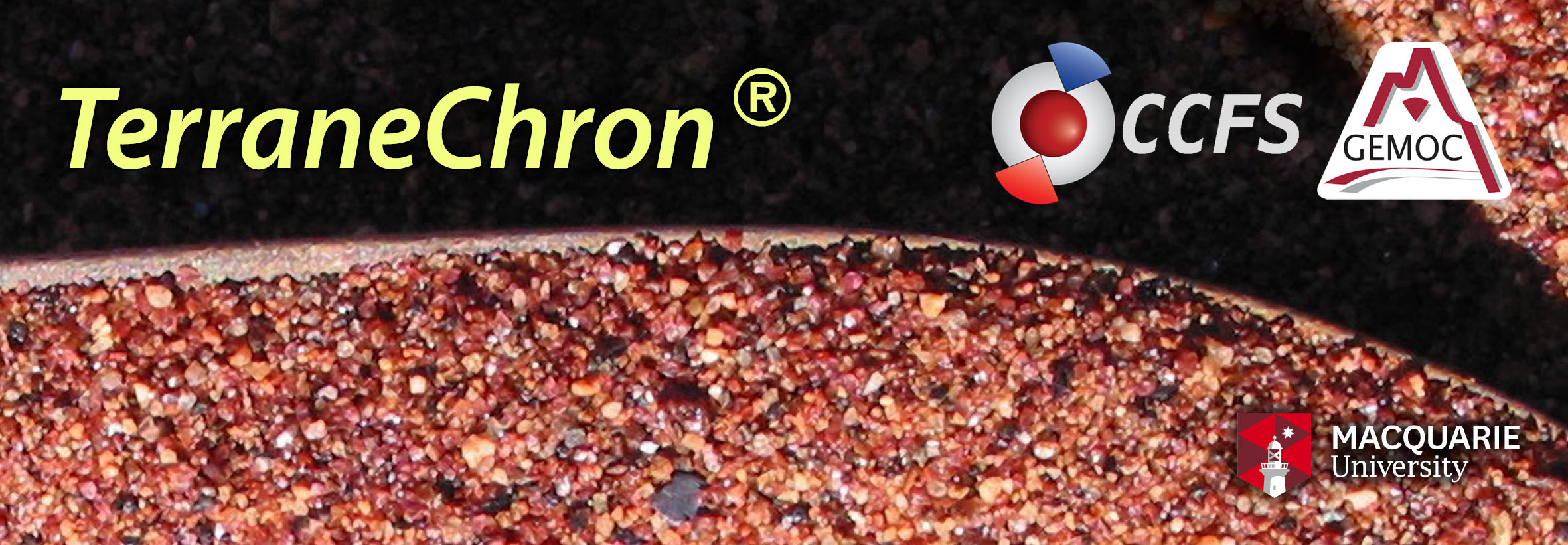- U-Pb ages, with precision equivalent to SHRIMP
- Hf isotopes trace magma sources (crustal vs juvenile mantle input)
- Trace elements identify parental rock types of detrital zircons
- Regional heavy-mineral sampling (modern drainages: terrane analysis)
- Sedimentary rocks (basin analysis)
- Igneous rocks (dating, specialised genetic studies)
A powerful methodology for studying crustal evolution and evaluating the metallogenic potential of terranes
TerraneChron®, a methodology for terrane evaluation developed by CCFS/GEMOC, requires the integration of data from three instruments (electron microprobe, LAM-ICPMS and LAM-MC-ICPMS) and delivers fast, cost-effective information on the tectonic history of regional terranes. The extensive database (over 31,600 zircon U-Pb and Hf-isotope analyses) in the Macquarie Geoanalysis laboratory allows unparalleled contextual information in the interpretations and reports provided to industry.
What is TerraneChron®?
What kind of samples?
Applications
- Supported by NCRIS investment into the AuScope Earth Composition & Evolution (ECE) component

Remote sensing with detrital samples
• Based on zircon analyses
• Efficient and cost-effective
• Identifies regional tectonic events
• Dates magmatic episodes
• Fingerprints crustal reworking and mantle input (fertility)
